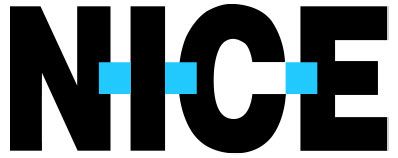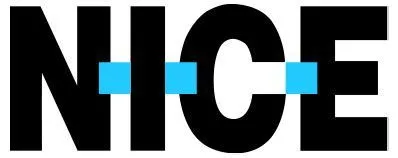Inbound call centers - those that handle incoming phone calls from customers - can be complicated to manage because there are so many swiftly moving parts and invested constituents. Call volume can spike, blizzards can hit, and agents can call in sick, leaving disruption in your ability to handle a call volume you have no control over. This means successful leaders have to be nimble. At the same time, these leaders also need to be in tune with the people that have a direct or indirect interest in the inbound call center - customers, agents, support staff – and even the marketing and product teams want a piece of the call center.
With so many stakeholders vying for attention, it can be hard for managers to keep their eye on the ball. Focusing on these eight best practices will help. Notice that it starts with the customer.
1. Focus on customer experience
Businesses have moved beyond competing on price and product and are now trying to differentiate themselves based on the experiences they provide. Our consumer benchmark study revealed that 87% of consumers are willing to buy more products from businesses that provide great experiences, so it's a sound strategy. Inbound call centers play a crucial role in delivering these revenue-generating experiences, so everything from the standard greeting to agent training to the establishment of KPIs needs to be designed with the customer in mind. Additionally, organizations should regularly seek customer opinions about call center experiences by administering surveys that measure:
2. Engage agents
The saying "happy agents make happy customers" may be overused, but that doesn't mean it's not 100% true. Engaged employees feel an emotional commitment toward their employers and are more vested in helping their employers succeed. According to a Gallup study, high employee engagement leads to higher customer engagement, lower employee turnover, and 21% higher profitability. Engage your agents by recognizing outstanding performance and providing frequent, effective communication. We've seen businesses improve agent engagement by making individual performance stats available on agent dashboards and by the gamification of specific agent behaviors.
Since we're on the topic, also check out these blog posts:
- Contact center supervisors: Practical advice for boosting remote agent engagement
- Contact Center Agent Training: Key to Engagement and Customer Experience
- Improving Agent Experience (AX) and Engagement One Step at a Time
3. Choose and focus on the right metrics
Inbound call centers have so many things they can measure that it's tempting to make each measurement equally important. That can lead to data overload and the really important metrics can get lost in the shuffle. Call centers should have 5-8 KPIs they use to assess the health of the operation and they should include a mix of operational and customer-related metrics. Every inbound call center will have unique priorities, but here some examples of metrics that are usually dashboard-worthy:
- Average handle times
- Abandon rate
- Average wait time
- Service levels
- First call resolution
- Schedule adherence
- Customer satisfaction
- Forecast accuracy
- Net Promoter Score
- Quality scores
For more information about identifying inbound call center metrics, read our blog post, Establish KPI Reporting and Contact Center Benchmarks
4. Invest in your supervisors
When inbound call centers are treated like cost centers, they typically run on very tight budgets. This often squeezes training funds, especially ones earmarked for training supervisors. Call centers should resist the attitude that "supervisors will pick it up as they go." Instead, they should invest in supervisor development so they are competent in everything from agent coaching to handling escalated calls to understanding and managing to metrics. One sure way to increase agent attrition is to make them work with an undeveloped supervisor. Fight the urge. Train your supervisors.
5. Automate where possible
Modern technology has created a unique opportunity for automation in inbound call centers. Interactive voice response (IVR) systems can automate common tasks to remove the need for customers to have to speak with an agent altogether, like checking account balances and paying bills. Chatbots assist customers with common questions, and if the issue is complicated and needs agent support, the chatbot can pass all that relevant information gathered to the agent to reduce the agent handle time. Speech analytics tools can screen 100% of recorded calls to identify common issues and individual calls that need further attention. These self-service and automation techniques are particularly impactful for inbound call centers as they help reduce the overall inbound traffic and decrease labor costs, improve accuracy, and give customers the opportunity to self-serve. The business case can almost write itself.
Read more about call center automation:
- Contact Center Automation: From Nice-to-Have to Necessity
- Why Does Your Contact Center Need Speech Analytics?
- AI clearing the way with conversational self-service
6. Give agents the tools and data they need
The customer experience delivered by inbound call centers is highly dependent on how prepared the agents are. Training is a big part of that, but agents also need to be equipped with technical tools and data that includes everything from company policies to details about the customer's previous interactions with the organization. Centralized knowledge bases can house relevant static information in easily searchable formats while customer relationship management (CRM) software puts customer data at agents' fingertips.
Pro tip: CRM software is even more powerful when integrated with call center systems. Find out more by reading Contact Center 101: The What and Why of CRM Integration.
7. Get professional input regarding compliance
There really isn't anything fun regarding the topic of compliance, but being out of compliance can generate a whole lot of excitement. Bad excitement, to the tune of thousands of dollars in fines. The best software has features that help inbound call centers comply with laws and regulations, but ultimately it's the organization's responsibility. Being knowledgeable about Federal, state, and local rules is the job of an expert and worth the expense.
8. Plan for the digital transformation
There will come a time when organizations that only offer inbound call center support will be a thing of the past. Customers expect to have options for how they interact with businesses, and this includes a higher demand for digital support through channels like chat and social media. Inbound call centers should plan for the day when they begin supporting additional channels and position themselves accordingly, including choosing call center software that can meet these future needs.
Watch our recorded webinar, Digital-First Customer Service: The Future is Here Today, to learn more about the need for digital transformation.





